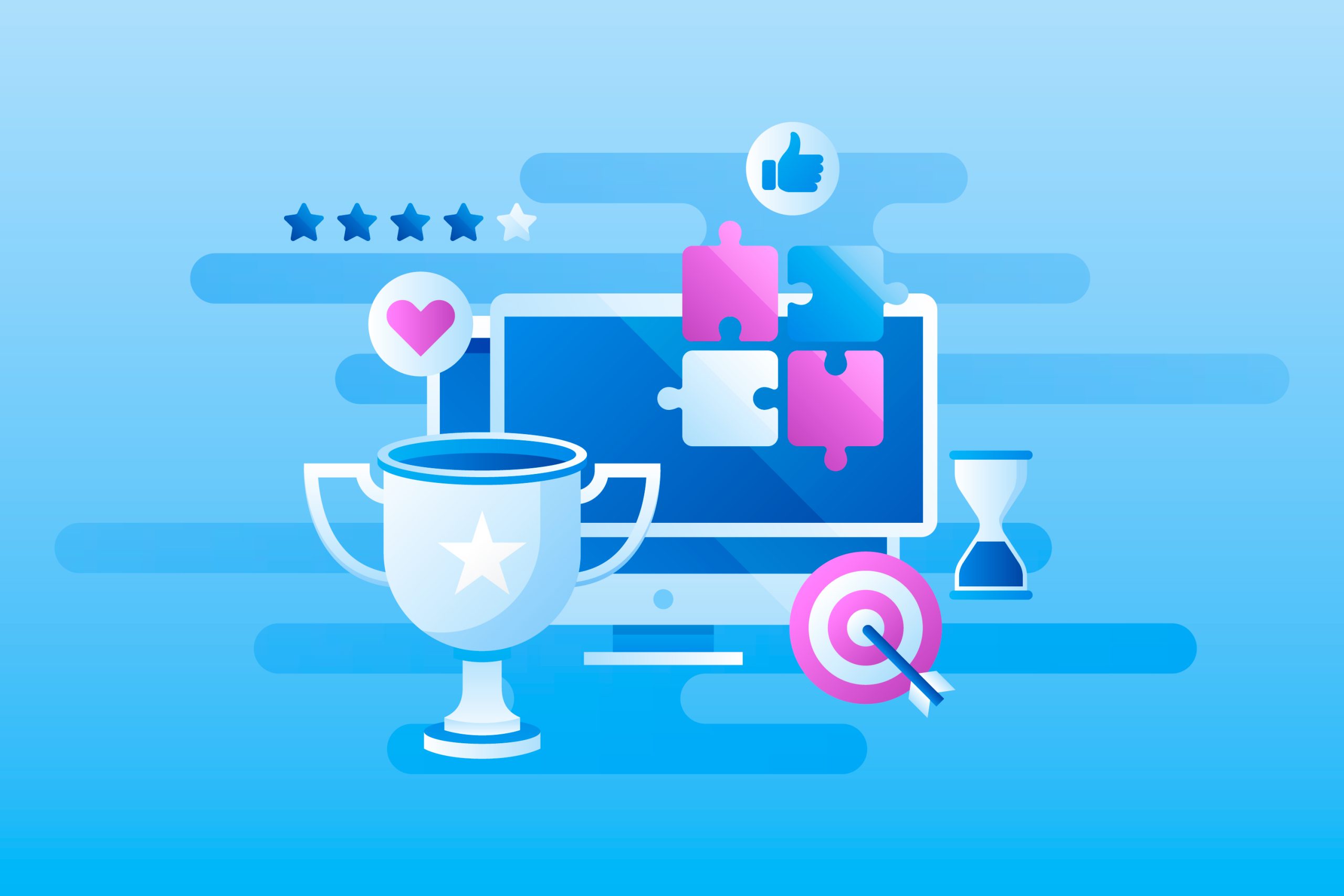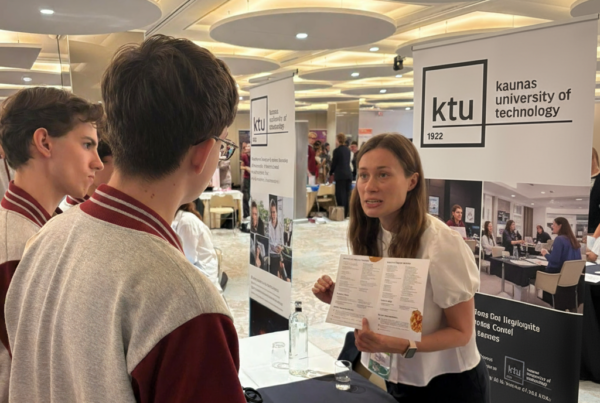Today, organizing a conference or trade show that stands out in a crowded event market requires more than good speakers and attractive booths. Attendees are looking for memorable and interactive experiences that justify their investment of time and money. This is where the gamification of conferences and trade shows has become an essential tool for innovative organizers looking to differentiate themselves.
Challenges in the organization of congresses and trade fairs
Organizing a successful event in the digital age comes with numerous challenges. Competition among similar events is fierce, and capturing the attention of attendees has become more difficult than ever. Attendees, constantly bombarded by digital stimuli, have ever-lower attention thresholds. In addition, justifying the ROI of participation in these events, for both exhibitors and attendees, is increasingly difficult.
Learn more about the 7 crucial kpis for events.
Among the main challenges faced by the organizers are:
- The difficulty of keeping attendees engaged throughout the event
- The need to facilitate effective networking among participants
- The challenge of providing added value versus virtual alternatives
- The complexity of accurately measuring event impact and outcomes
How gamification can improve participant experience
Gamification applies elements and principles of game design in non-game contexts to increase participation and engagement. In the realm of conferences and trade shows, this strategy transforms the way attendees interact with content, exhibitors and each other.
Implementing gamification techniques in professional events allows:
- Increase the active participation of attendees
- Create a more relaxed environment that facilitates professional connections
- Increase information retention and learning
- Improve the overall event experience, making it more memorable
- Provide valuable data on attendee behavior and interests
According to industry studies, “events that incorporate gamification elements see a 37% increase in attendee interactions and 42% more time spent visiting booths or participating in scheduled activities.”
Gamification strategies applied to conferences and fairs
Point systems and rewards
One of the most effective elements of gamification with event technology is the implementation of point systems. These systems incentivize specific behaviors that benefit both organizers and exhibitors:
Practical examples:
- Award points for attending specific sessions
- Reward participation in surveys or feedback questionnaires
- Incentivize booth visits through digital check-ins
- Recognize participation in social media with event hashtags
These points can be redeemed for tangible rewards (merchandising, discounts, sponsor products) or intangible rewards (VIP access to exclusive content, private meetings with keynote speakers).
Challenges and interactive missions for attendees
Las misiones y desafíos transforman la experiencia pasiva en una aventura activa, donde los asistentes se convierten en protagonistas:
- Thematic tours: Customized routes according to professional interests where attendees must complete activities in different areas of the event.
- Corporate escape rooms: Challenges based on solving problems related to the theme of the congress.
- Daily missions: Challenges that are renewed every day of the event to maintain interest and constant participation.
- Team competitions: Activities that encourage collaboration between attendees who did not know each other previously.
Booth games and brand activations
Exhibitors can also benefit greatly from gamification to stand out from the crowd:
- Augmented reality: Immersive experiences that show products or services interactively.
- Thematic quizzes: Quizzes about the sector that educate while entertaining.
- Digital roulettes and gamified sweepstakes: Traditional elements brought to the digital environment to generate traffic to the booth.
- Interactive photo booths: Spaces to create shareable content that increases brand visibility in social networks.
According to the experience of regular exhibitors at international trade shows: “Since implementing interactive games in our booth, we have seen a 150% increase in meaningful interactions and 65% more qualified leads”.
Integration of technology in gamification
Use of mobile apps and digital platforms
Technology is the catalyst that has revolutionized the gamification of congresses and fairs, enabling more personalized and measurable experiences:
- Event-specific Apps: Applications that centralize all gamified dynamics, providing a coherent and easy-to-follow experience.
- Gamification SaaS platforms: Solutions that allow the implementation of gamification strategies without the need for custom development.
- Integration with CRM: Linking gamified activities with customer management systems for more effective post-event follow-up.
- Real-time analytics: Monitoring of progress and participation to adjust dynamics during the event itself.
Smart Badges and QR Codes for gamified dynamics
Physical elements with a digital component represent the perfect bridge between the face-to-face and digital experience:
- Interactive Smart Badges: Smart badges that automatically record participation in activities and facilitate the exchange of information among attendees.
- Dynamic QR Codes: Codes that unlock content, challenges or rewards when scanned in different locations.
- NFC technology: Allows instant interactions with physical elements of the event for a more fluid gamification.
- Beacons: Devices that detect the proximity of attendees and can trigger challenges or contextual information.
The integration of these technologies not only enhances the user experience, but also provides valuable data for organizers about the attendees’ journey and preferences.
Learn more about beamian integrations.
Use cases at international congresses and trade fairs
Featured events that have successfully used gamification
Mobile World Congress (Barcelona)
MWC implemented a “Tech Explorers” dynamic where attendees had to discover hidden innovations in different pavilions by scanning QR codes that unlocked exclusive information and earned points. The most active participants earned access to private sessions with technology leaders.
FITUR (Madrid)
The international tourism fair created “The Traveler’s Route,” a gamified adventure where attendees virtually “traveled” through different destinations by completing cultural challenges at each participating stand. This initiative increased the average time spent at the stands by 28%.
CES (Las Vegas)
The Consumer Electronics Show developed a “Trend Busters” competition where attendees had to identify and predict which innovations would have the greatest impact. Through an app, they voted and justified their predictions, generating in-depth conversations with exhibitors and among participants.
Results obtained in terms of engagement and ROI
Data collected from these and other events that have implemented gamification with event technology show significant results:
- 47% increase in meaningful interactions between attendees and exhibitors
- 35% increase in overall satisfaction reported by participants
- 52% improvement in retention of information presented during the event
- 63% increase in social media mentions compared to previous editions without gamification
- 41% increase in qualified leads for exhibitors that participated in gamified dynamics
These numbers prove that gamification is not just a passing trend, but a strategy with real impact on business results.
Conclusion and recommendations
Keys to implement an effective gamification strategy for congresses and trade fairs
In order to take full advantage of the potential of gamification of conferences and trade shows, it is essential to follow a strategic approach:
- Define clear objectives: Determine what behaviors you want to encourage and what metrics will define success.
- Know your audience: Adapt the game mechanics to the professional and generational profile of the attendees.
- Balance competition and collaboration: Create dynamics that encourage both healthy competition and teamwork.
- Simplicity and clarity: Design rules that are easy to understand so that participants can quickly join in.
- Integration with the event’s narrative: Align gamified dynamics with the theme and general objectives of the congress or fair.
- Select the right technology: Opt for solutions that offer flexibility and ease of implementation.
- Measure and adjust: Use the data collected to continuously improve the gamification strategy.
Gamification of conferences and trade shows has proven to be much more than a fad. When implemented correctly, it transforms traditional events into immersive experiences that generate greater value for everyone involved: organizers, exhibitors and attendees.
In a world where capturing attention has become the most valuable resource, gamification strategies offer an effective way to differentiate and create truly memorable events that meet business objectives while delighting attendees.
Are you ready to transform your next conference or trade show with innovative gamification strategies? Find out how beamian’s technology can help you implement these dynamics easily and effectively.








